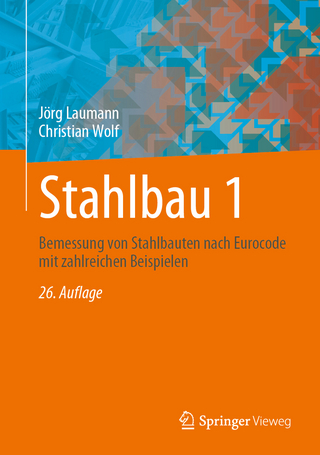
VANET – Vehicular Applications and Inter– Networking Technologies
Wiley-Blackwell (Verlag)
978-0-470-74056-9 (ISBN)
- Titel ist leider vergriffen;
keine Neuauflage - Artikel merken
This book provides an invaluable introduction to inter-vehicular communications, demonstrating the networking and communication technologies for reducing fatalities, improving transportation efficiency, and minimising environmental impact. This book addresses the applications and technical aspects of radio-based vehicle-to-vehicle and vehicle-to-infrastructure communication that can be established by short- and medium range communication based on wireless local area network technology (primarily IEEE 802.11). It contains a coherent treatment of the important topics and technologies contributed by leading experts in the field, covering the potential applications for and their requirements on the communications system. The authors cover physical and medium access control layer issues with focus on IEEE 802.11-based systems, and show how many of the applications benefit when information is efficiently disseminated, and the techniques that provide attractive data aggregation (also includes design of the corresponding middleware).
The book also considers issues such as IT-security (means and fundamental trade-off between security and privacy), current standardization activities such as IEEE 802.11p, and the IEEE 1609 standard series. Key Features:* Covers the state-of-the-art in the field of vehicular inter-networks such as safety and efficiency applications, physical and medium access control layer issues, middleware, and security* Shows how vehicular networks differ from other mobile networks and illustrates the idea of vehicle-to-vehicle communications with application scenarios and with current proofs of concept worldwide* Addresses current standardization activities such as IEEE 802.11p and the IEEE 1609 standard series* Offers a chapter on mobility models and their use for simulation of vehicular inter-networks* Provides a coherent treatment of the important topics and technologies contributed by leading academic and industry experts in the field This book provides a reference for professional automotive technologists (OEMS and suppliers), professionals in the area of Intelligent Transportation Systems, and researchers attracted to the field of wireless vehicular communications.
Third and fourth year undergraduate and graduate students will also find this book of interest. For additional information please visit http://www.vanetbook.com
Hannes Hartenstein is a professor for decentralized systems and network services at the Karlsruhe Institute of Technology (KIT), Germany, which is formed by the KIT Steinbuch centre for Computing. Prior to joining the University of Karlsruhe, he was a senior research staff member with NEC Europe. He was NEC's project leader (2001-03) for the 'FleetNet - Internet on the Road' project partly funded by the German Ministry of Education and Research (BMBF), and involved in the 'NOW: Network on Wheels' project (2004-08), also funded by BMBF. He is currently actively participating in the EU FP7 project PRE-DRIVE-C2X. He was General Co-Chair of the ACM International Workshop on Vehicular Ad-Hoc Networks (VANET) in 2005, technical co-chair of ACM VANET in 2006, technical co-chair of the IEEE chair of the IFIP/IEEE Conference on Wireless On-Demand Network Systems and Services (WONS) in 2008. He is a member of he scientific directorate of the center for Informatics, Schloss Dagstuhl. His research interests include mobile networks, virtual networks, and IT management. he holds a diploma in mathematics and a doctoral degree in computer science, both from Albert-Ludwigs-Universitat, Freiburg, Germany. Kenneth P Laberteaux is a senior principal research engineer for the Toyota Technical Center in Ann Arbor, MI. His research focus is information-rich vehicular safety systems, focusing on architecture, security, and protocol design for vehicle-to-vehicle and vehicle-to-roadside wireless communication. He was a founder and two-year (2004-05) general co-chair of the highly selective, international Vehicular Ad-hoc Networks (VANET) workshop. He serves as the architect and technical lead for communications research within a multi-year, multi-million dollar Vehicle Safety Communications-Applications collaboration project between the US government and several automotive companies. he completed his MSc (1996) and PhD (2000) degrees in electrical engineering at the University of Notre Dame, Focusing on adaptive control for communications. In 1992, he received his BSE (summa cum laude) in electrical engineering from the University of Michigan, Ann Arbor.
Foreword. About the Editors. Preface. Acknowledgements. List of Contributors. 1 Introduction (Hannes Hartenstein and Kenneth P. Laberteaux). 1.1 Basic Principles and Challenges. 1.2 Past and Ongoing VANET Activities. 1.3 Chapter Outlines. 1.4 References. 2 Cooperative Vehicular Safety Applications (Derek Caveney). 2.1 Introduction. 2.2 Enabling Technologies. 2.3 Cooperative System Architecture. 2.4 Mapping for Safety Applications. 2.5 VANET-enabled Active Safety Applications. 2.6 References. 3 Information Dissemination in VANETs (Christian Lochert, Bjorn Scheuermann and Martin Mauve). 3.1 Introduction. 3.2 Obtaining Local Measurements. 3.3 Information Transport. 3.4 Summarizing Measurements. 3.5 Geographical Data Aggregation. 3.6 Conclusion. 3.7 References. 4 VANET Convenience and Efficiency Applications (Martin Mauve and Bjorn Scheruermann). 4.1 Introduction. 4.2 Limitations. 4.3 Applications. 4.4 Communication Paradigms. 4.5 Probabilistic, Area-based Aggregation. 4.6 Travel Time Aggregation. 4.7 Conclusion. 4.8 References. 5 Vehicular Mobility Modeling for VANETs (Jerome Harri). 5.1 Introduction. 5.2 Notation Description. 5.3 Random Models. 5.4 Flow Models. 5.5 Traffic Models. 5.6 Behavioral Models. 5.7 Trace or Survey-based Models. 5.8 Integration with Network Simulators. 5.9 A Design Framework for Realistic Vehicular Mobility Models. 5.10 Discussion and Outlook. 5.11 Conclusion. 5.12 References. 6 Physical Layer Considerations for Vehicular Communications (Ian Tan and Ahmad Bahai). 6.1 Standards Overview. 6.2 Previous Work. 6.3 Wireless Propagation Theory. 6.4 Channel Metrics. 6.5 Measurement Theory. 6.6 Emperical Channel Characterization at 5.9 GHz. 6.7 Future Directions. 6.8 Conclusion. 6.9 Appendix: Deterministic Multipath Channel Derivations. 6.10 Appendix: LTV Channel Response. 6.11 Appendix: Measurement Theory Details. 6.12 References. 7 MAC Layer and Scalability Aspects of Vehicular Communication Networks (Jens Mittag, Felix Schmidt-Eisenlohr, Moritz Killat, Marc Torrent-Moreno and Hannes Hartenstein). 7.1 Introduction: Challenges and Requirements. 7.2 A Survey on Proposed MAC Approaches for VANETs. 7.3 Communication Based on IEEE 802.11p. 7.4 Performance Evaluation and Modeling. 7.5 Aspects of Congestion Control. 7.6 Open Issues and Outlook. 7.7 References. 8 Efficient Application Level Message Coding and Composition (Craig L Robinson). 8.1 Introduction to the Application Environment. 8.2 Message Dispatcher. 8.3 Example Applications. 8.4 Data Sets. 8.5 Predictive Coding. 8.6 Architecture Analysis. 8.7 Conclusion. 8.8 References. 9 Data Security in Vehicular Communication Networks (AndreWeimerskirch, Jason J Haas, Yih-Chun Hu and Kenneth P Laberteaux). 9.1 Introduction. 9.2 Challenges of Data Security in Vehicular Networks. 9.3 Network, Applications, and Adversarial Model. 9.4 Security Infrastructure. 9.5 Cryptographic Protocols. 9.6 Privacy Protection Mechanisms. 9.7 Implementation Aspects. 9.8 Outlook and Conclusions. 9.9 References. 10 Standards and Regulations (John B Kenney). 10.1 Introduction. 10.2 Layered Architecture for VANETs. 10.3 DSRC Regulations. 10.4 DSRC Physical Layer Standard. 10.5 DSRC Data Link Layer Standard (MAC and LLC). 10.6 DSRC Middle Layers. 10.7 DSRC Message Sublayer. 10.8 Summary. 10.9 Abbreviations and Acronyms. 10.10 References. Index.
| Erscheint lt. Verlag | 22.2.2010 |
|---|---|
| Reihe/Serie | Intelligent Transport Systems |
| Verlagsort | Hoboken |
| Sprache | englisch |
| Maße | 176 x 251 mm |
| Gewicht | 948 g |
| Themenwelt | Technik ► Bauwesen |
| Technik ► Elektrotechnik / Energietechnik | |
| Technik ► Fahrzeugbau / Schiffbau | |
| Technik ► Nachrichtentechnik | |
| ISBN-10 | 0-470-74056-6 / 0470740566 |
| ISBN-13 | 978-0-470-74056-9 / 9780470740569 |
| Zustand | Neuware |
| Haben Sie eine Frage zum Produkt? |
aus dem Bereich


